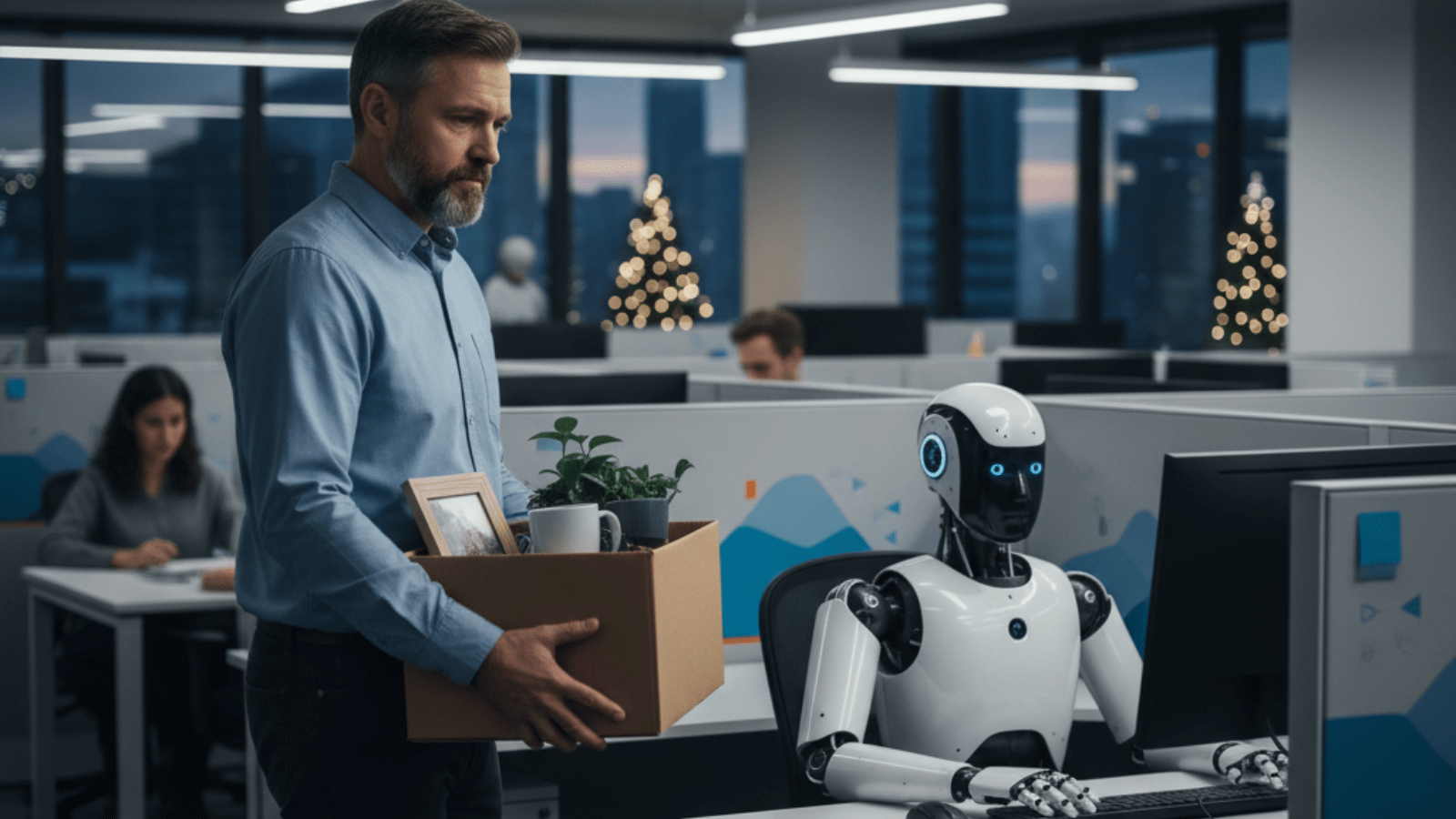
The American economy is going through something we haven’t seen since the Second Industrial Revolution. Artificial intelligence isn’t just changing how we work, it’s changing who works at all. Amazon just announced it’s cutting around 14,000 corporate jobs, which is about 4 percent of its corporate workforce. The company says it’s partly because they hired too many people during the pandemic boom, but also because AI is now doing work that used to require human employees. Some reports suggest the total cuts could climb to 30,000 positions.
Then there’s Salesforce, which cut roughly 4,000 customer support jobs in 2025 after rolling out AI agents that can handle the kind of questions customers used to call in. They went from about 9,000 support staff down to 5,000. Walmart and Target have followed similar patterns, trimming 1,500 and 1,800 corporate positions, respectively, as they automate more operations. These aren’t isolated incidents. They’re signs of a fundamental shift in how companies operate.
Add to this the current government shutdown, which is creating additional economic uncertainty, and you have a perfect storm heading into the holiday season. When giants like Amazon and Salesforce restructure, the effects ripple outward. Think about all the smaller companies that supply them with services, handle their logistics, or depend on their contracts; not to mention the economic impact of thousands of ex-employees who now have no paycheck heading into the biggest shopping season of the year. Those businesses might see delayed payments, fewer orders, or projects put on hold. It’s not all bad news. There are real opportunities opening up for companies that can help others adopt AI or that use these tools to work smarter themselves.
For B2B companies navigating this transition, data becomes a competitive advantage. Chain Store Guide’s retail and foodservice intelligence helps suppliers and service providers identify which chains are expanding, where new locations are opening, and which operators are gaining market share, even as others pull back. In an economy where some businesses are contracting while others grow, knowing where to focus your sales efforts isn’t just helpful, it’s essential.
Small and medium-sized businesses that move quickly can come out ahead by improving efficiency and offering more valuable services to clients who are dealing with the same changes.
Now, as we head into the 2025 holiday season, consumer behavior is probably going to shift. When people hear about major layoffs, they tend to tighten their belts. Discretionary spending drops, especially on expensive items. With fewer seasonal jobs available and less overtime pay going around, household incomes aren’t growing as fast. That means more people are sticking to essentials, hunting for deals, and putting off big purchases. For small retailers and B2B companies, this could mean slower sales right when they’re counting on strong year-end numbers.
Businesses that embrace AI and stay flexible aren’t just surviving; they’re setting themselves up to lead in 2026. Companies using automation to work more efficiently, personalize their marketing, or cut costs can stay competitive even when the economy feels uncertain. This isn’t really a story about economic decline. It’s about evolution. The economy is becoming more efficient and more technology-driven, and the businesses that learn and adapt fastest will be the ones leading the next wave of growth.
Sources:

December 12, 2025
Here’s something most B2B sales teams won’t admit: They’re scrambling right now. While everyone else is in holiday mode, thehttps://www.chainstoreguide.com.
November 26, 2025
Early consumer spending, persistent shutdown anxiety, and lackluster promotions converged to erase the holiday surge retailers and suppliers were countinghttps://www.chainstoreguide.com.
November 21, 2025
Smart Teams Use AI Tools + Verified Data (Not AI Alone) AI can draft your emails, summarize your research,https://www.chainstoreguide.com.